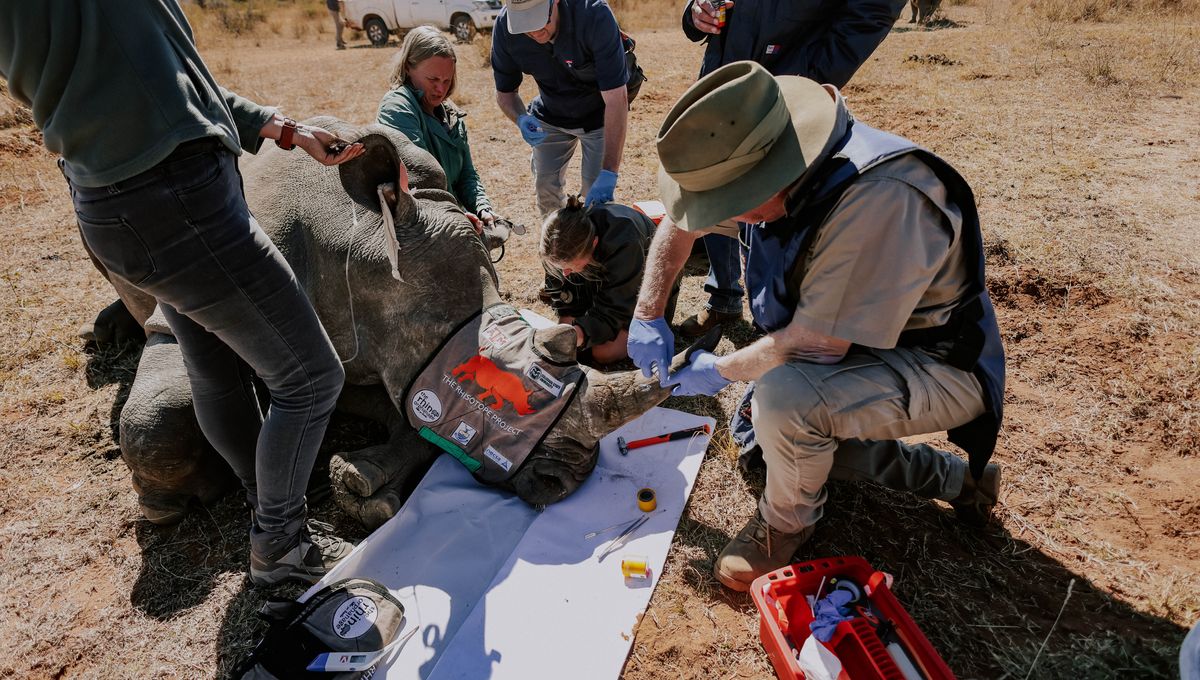
After six years of research and a successful trial period, a South African program that hopes to curb rhino poaching by inserting radioactive material into their horns is now in operation.
While conservation efforts have seen rhino populations in South Africa and other parts of their range begin to bounce back from the brink of extinction, poaching is still very much a problem. In 2024, 420 rhinos were illegally killed in South Africa – a 15 percent decrease from the previous year, but still very much a threat to their recovery.
What the poachers are usually after are the rhinos’ horns, primarily driven by a demand for their use in traditional medicines and as a marker of social status.
That’s where the Rhisotope Project comes in. In a creative new approach to tackling the rhino poaching problem, the project involves inserting radioactive materials into the horns of rhinos, with the aim of making poached horns easier to detect at international borders. If there’s a greater chance they’ll be found out, this could ultimately put poachers off.
Last June, the project began trialing the method for the first time, putting low-dose, non-toxic radioisotopes into the horns of 20 live rhinos living in the UNESCO Waterberg Biosphere Reserve.
It appears to have been a resounding success.
“We have demonstrated, beyond scientific doubt, that the process is completely safe for the animal and effective in making the horn detectable through international customs nuclear security systems,” said Wits University Professor James Larkin, the Chief Scientific Officer of the Rhisotope Project, in a statement.
The team behind the project tested the safety of using radioactive isotopes by taking blood samples from the rhinos and examining the white blood cells within for signs of DNA damage – they didn’t find any.
As for whether or not the radioactive horns could be detected in a wide variety of circumstances, using 3D-printed models of rhino horns, the pilot study showed that to be a success too.
“We simulated transport scenarios with the 3D-printed horns on carry-on luggage, air cargo shipments and priority parcel delivery systems and in each case, even a single horn with significantly lower levels of radioactivity than what will be used in practice successfully triggered alarms in radiation detectors,” said Larkin.
Last year, the International Union for Conservation of Nature and Natural Resources (IUCN) reported a mixed picture for Africa’s rhinos, which consists of the near-threatened white rhino and the critically endangered black rhino. Overall, the number of rhinos had increased from the previous year – but poaching saw the black rhino population fall by 1 percent.
Now that it’s operational, those at the Rhisotope Project are urging those responsible for the care of rhinos to get them treated with this novel approach as soon as possible.
“Our goal is to deploy the Rhisotope technology at scale to help protect one of Africa’s most iconic and threatened species. By doing so, we safeguard not just rhinos but a vital part of our natural heritage,” said Jessica Babich, CEO of the Rhisotope Project.
Source Link: Rhino Horns Go Radioactive As Anti-Poaching Project Gets Off The Ground